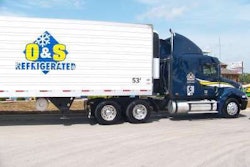Engine makers beat the odds to meet EPA’s 2010 standards
The optimism – and even genuine excitement – seen by engine manufacturers as 2010 draws near is in sharp contrast to the industry’s general mood 10 years ago. By any measure, 1998 was not a good year for diesel engine manufacturers. Earlier, the U.S. Environmental Protection Agency had determined that a majority of manufacturers had employed electronic “defeat” devices that would meet current emissions guidelines in test conditions, but would allow the engines to go out of compliance in real-world operations, allegedly to ensure improved performance for customers.
Negotiations between EPA and diesel engine manufacturers had gone on for months before a settlement was agreed upon that year: More than $1 billion in fines were assessed to the manufacturers, and EPA laid down a new set of emissions regulations that manufacturers would be required to meet over the next 10 years. The new regulations were tough, requiring a 95 percent reduction in emissions of nitrous oxide and a 90 percent reduction in particulate matter (soot) emissions by January 2010, phased in gradually over the coming decade.
Publicly, industry insiders called the new regulations “unprecedented” and “challenging”; privately, they used words such as “unrealistic” and “unattainable.” Engineers blinked in dismay at the task they were being handed. Many of them felt the government had overreached: Reductions of 95 percent for NOx and 90 percent for particulate emissions simply weren’t feasible, they said. “I don’t know how we’re going to do this,” one product specialist said at the time. “We’re going to try our best.









